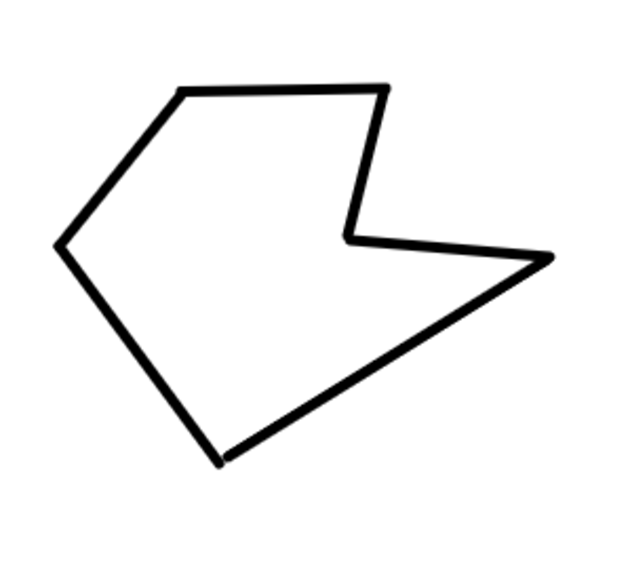In geometry, the hexagon is a polygon with six sides. Its name is derived from the Greek words “hexa,” meaning six, and “gonia,” meaning angles. A hexagon is a two-dimensional shape that can have equal or unequal sides and angles. It is a versatile shape that appears in various forms in nature and man-made structures.
What is a Hexagon?
A hexagon is a closed two-dimensional shape with six sides. It is a polygon that consists of six straight line segments. A hexagon can be regular or irregular, depending on the lengths of its sides and the measures of its angles.

Hexagon Formulas
To calculate different properties of a hexagon, we can use various formulas. The main formulas for a hexagon are:
Perimeter of a Hexagon
The perimeter of a hexagon is the sum of the lengths of its six sides. In a regular hexagon, where all sides are equal, the perimeter can be calculated by multiplying the length of one side by six.
Perimeter = Length of one side × 6
Area of a Hexagon
The area refers to the total space enclosed by the shape. The formula used to calculate the area (A) of a regular hexagon is given by:
A = (3√3 / 2) * s²
Again, “s” is the length of a side.
In this formula, the side length refers to the length of any side of the hexagon.
Diagonals of a Hexagon
A diagonal is a line segment that connects two non-adjacent vertices of a polygon. A hexagon has nine diagonals. These diagonals can be drawn between any two non-adjacent vertices of the hexagon. The length of the diagonals can be calculated using the side length of the hexagon.
Properties of a Hexagon
A hexagon has several properties that distinguish it from other polygons. These properties include:
- Two-dimensional shape: A hexagon exists in a plane and has a flat surface.
- Encloses a space: The sides of a hexagon form a closed figure that encloses an area.
- Six straight sides: A hexagon has six straight line segments as sides.
- Six interior angles: A hexagon has six interior angles, each measuring 120 degrees. The sum of all the interior angles is 720 degrees.
- Six exterior angles: A hexagon has six exterior angles, each measuring 60 degrees. The sum of all the exterior angles is 360 degrees.
- Nine diagonals: A hexagon has nine diagonals, which are line segments connecting two non-adjacent vertices.
Types of Hexagons
Hexagons can be classified into different types based on the lengths of their sides and the measures of their angles. The main types of hexagons are:
Regular Hexagon
A regular hexagon is a hexagon with six equal sides and six equal interior angles. All the sides of a regular hexagon have the same length, and all the interior angles measure 120 degrees. A regular hexagon also has lines of symmetry and rotational symmetry.

Irregular Hexagon
An irregular hexagon is a hexagon with sides of different lengths and angles of different measures. In an irregular hexagon, the sides and angles can vary in size and shape.

Convex Hexagon
A convex hexagon is a hexagon in which all the interior angles are less than 180 degrees. The vertices of a convex hexagon point outwards, and there are no indentations or concave portions in the shape.
Concave Hexagon
A concave hexagon is a hexagon in which at least one interior angle is greater than 180 degrees. The vertices of a concave hexagon can point inward, creating indentations or concave portions in the shape.

Complex Hexagons
Complex hexagons are hexagonal shapes that intersect themselves. An example of a complex hexagon is a hexagram, also known as the Star of David.
Frequently Asked Questions on Hexagon
Is a hexagon equal on all sides?
Not all hexagons are equal on all sides. Only regular hexagons have sides and angles that are all the same. Irregular hexagons have sides and angles of varying lengths and degrees.
How many sides does a hexagon have?
A hexagon, by definition, has six sides.
What are the three characteristics of a hexagon?
The three defining characteristics of a hexagon are that it has six sides, six angles, and six vertices.
What is the sum of all interior angles of a hexagon?
The sum of all interior angles of a hexagon is 720 degrees.
How many diagonals does a hexagon have?
A hexagon has nine diagonals.
What are the Angles of a Hexagon?
In a regular hexagon, each of the interior angles measures 120 degrees. In an irregular hexagon, the angles can be of varying degrees.
How many Lines of Symmetry are there in a Hexagon?
A regular hexagon has six lines of symmetry. This means you can fold the shape in six different ways, and each fold will give you two halves that are mirror images of each other.
What is a hexagon 3D shape called?
A three-dimensional figure based on the hexagon is known as a hexagonal prism.
What does a hexagon look like?
A hexagon is a polygon with six sides. In a regular hexagon, all sides and angles are equal, and it appears symmetrical. An irregular hexagon can have sides and angles of different lengths and degrees, giving it a less symmetrical appearance.
Solved Examples on Hexagon
Example 1: Find the perimeter of a regular hexagon whose each side measures 15 cm.
Solution: Using the formula for the perimeter of a hexagon, P = 6s, where s = 15 cm, we get P = 6 * 15 cm = 90 cm. Hence, the perimeter of the hexagon is 90 cm.
Example 2: Find the area of a regular hexagon whose each side measures 10 cm.
Solution: Using the formula for the area of a hexagon, A = (3√3 / 2) * s², where s = 10 cm, we get A = (3√3 / 2) * 10² = 259.81 cm². Therefore, the area of the hexagon is 259.81 cm².
Example 3: Determine the measure of the sixth angle of a hexagon if the other five angles measure 110 degrees each.
Solution: The sum of all interior angles of a hexagon is 720 degrees. Since five angles already measure 110 degrees each, we can subtract their sum from 720 to find the measure of the sixth angle. Sum of five angles = 5 × 110 degrees = 550 degrees Measure of the sixth angle = 720 degrees – 550 degrees = 170 degrees So, the measure of the sixth angle is 170 degrees.
How Kunduz Can Help You Learn Hexagon?
At Kunduz, we understand the importance of mastering geometric concepts like the hexagon. We offer comprehensive and interactive learning materials to help students grasp the fundamentals of geometry. Our step-by-step tutorials, engaging videos, and practice problems provide a structured approach to learning and reinforce key concepts. Whether you’re studying for a test or simply want to deepen your understanding of geometry, Kunduz is here to support you on your learning journey. Join Kunduz today and unlock your full potential in geometry.
For readers exploring the properties of pentagon and interested in a broader understanding of polygons, we offer various other polygon pages. These resources delve into the formulas, characteristics, and classifications of polygons, providing a comprehensive exploration of geometric shapes beyond the pentagon:
What is Quadrilateral? Properties, Definition, Types, Area, Solved Examples, FAQs
What is a Heptagon: Definition, Properties, Types, Formula, Solved Example
Octagon Shape: Definition, Properties, Formula, Examples, Sides & Angles
Pentagon: Definition, Shape, Properties, Types, Formula & Example
